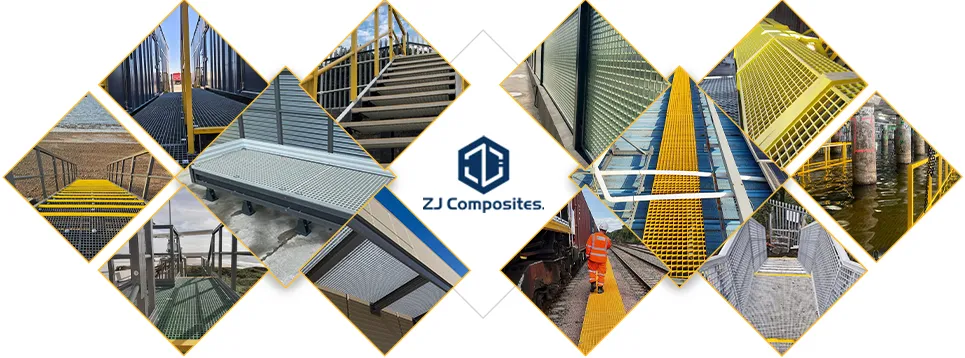loading...
- No. 9, Xingyuan South Street, Dongwaihuan Road, Zaoqiang County, Hengshui, Hebei, China
- admin@zjcomposites.com
- +86 15097380338
- Welcome to visit our website!
sectional steel tanks
Sectional Steel Tanks A Comprehensive Overview
Sectional steel tanks, often referred to as modular tanks or bolted tanks, have become a popular choice for various storage applications in industries ranging from water treatment to fuel storage. These tanks are designed for ease of installation and versatility, making them an ideal solution for both large-scale and smaller operations. In this article, we will explore the features, benefits, applications, and maintenance aspects of sectional steel tanks.
Features of Sectional Steel Tanks
One of the primary characteristics of sectional steel tanks is their modular design. Typically constructed in sections that can be transported and assembled on-site, these tanks provide a flexible storage solution. The sections are manufactured from high-quality steel and coated with protective materials such as epoxy or galvanization to prevent corrosion, ensuring longevity and durability.
The tanks come in various shapes and sizes, allowing for customization based on specific storage needs. They can be configured to hold capacities ranging from a few hundred liters to several million liters. Additionally, sectional steel tanks can be designed for various pressure levels, making them suitable for different types of liquids, including water, chemicals, and fuels.
Benefits of Sectional Steel Tanks
1. Ease of Assembly and Transport One of the most significant advantages of sectional steel tanks is their modular design, which simplifies transport and assembly. This is particularly beneficial for remote locations where transporting a large, pre-assembled tank would be challenging.
2. Cost-Effectiveness Constructing a sectional tank on-site can be more economical than installing a traditional welded tank. The reduction in transportation costs, combined with the ease of assembly, contributes to lower overall expenses.
3. Versatility These tanks can be used for a variety of applications, including water storage, wastewater treatment, fire protection, irrigation, and chemical storage. Their adaptability makes them a favorite among industries that require specific storage solutions.
4. Scalability Sectional steel tanks can be expanded easily. If the storage needs of a facility increase, additional sections can be added to the existing tank, thereby enhancing its capacity without the need for a completely new installation.
sectional steel tanks

5. Durability With proper maintenance and appropriate protective coatings, sectional steel tanks can last for decades. Their robust construction makes them well-suited to withstand various environmental conditions, including extreme temperatures and heavy loads.
Applications of Sectional Steel Tanks
The applications of sectional steel tanks are vast and varied. In the water industry, they are commonly used for potable water storage, providing a reliable source for municipal and industrial needs. They are also instrumental in wastewater treatment facilities, where they help in the storage and management of treated effluent.
In agriculture, sectional steel tanks are utilized for irrigation systems, ensuring that water supply is consistent and efficient. Furthermore, in the chemical industry, these tanks play a crucial role in storing hazardous materials safely due to their ability to maintain integrity under pressure.
In fire protection systems, sectional steel tanks are essential as they provide a source of water for firefighting efforts. Their large capacity ensures that sufficient water supply is available during emergencies.
Maintenance of Sectional Steel Tanks
Ensuring the longevity and efficiency of sectional steel tanks requires regular maintenance. This includes routine inspections for signs of corrosion, leaks, or structural damage. The protective coatings should be periodically checked and reapplied if necessary to maintain their effectiveness.
Cleaning the tanks is also crucial, especially when storing potable water or chemicals. Residue buildup can affect the quality of the contents and lead to contamination. Moreover, proper drainage systems should be installed to prevent stagnant water, which can become a breeding ground for pests and pathogens.
Conclusion
Sectional steel tanks represent a practical and versatile storage solution for a multitude of industries. Their ease of assembly, cost-effectiveness, and adaptability make them an attractive choice for businesses looking to optimize their storage capabilities. With proper maintenance, these tanks can provide reliable service for many years, making them a wise investment in storage technology. As industries continue to evolve, sectional steel tanks will undoubtedly remain a key component in effective resource management and storage.
-
The Rise of FRP Profiles: Strong, Lightweight, and Built to LastNewsJul.14,2025
-
SMC Panel Tanks: A Modern Water Storage Solution for All EnvironmentsNewsJul.14,2025
-
GRP Grating: A Modern Solution for Safe and Durable Access SystemsNewsJul.14,2025
-
Galvanized Steel Water Tanks: Durable, Reliable, and Ready for UseNewsJul.14,2025
-
FRP Mini Mesh Grating: The Safer, Smarter Flooring SolutionNewsJul.14,2025
-
Exploring FRP Vessels: Durable Solutions for Modern Fluid HandlingNewsJul.14,2025
-
GRP Structures: The Future of Lightweight, High-Performance EngineeringNewsJun.20,2025
